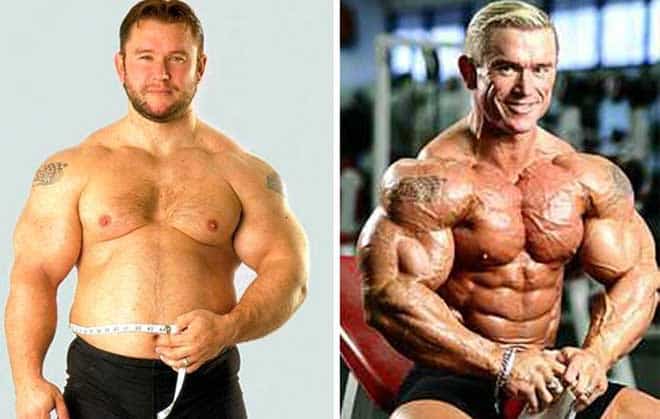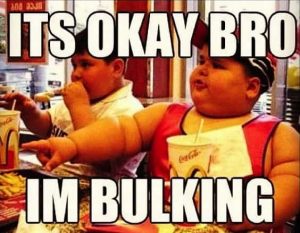
One of the biggest transformation dilemmas for the majority of lifters is, should they go for bulking first or cutting? Although, there is no concrete answer to this question as it depends on various vital factors. What are the factors? Well in this piece, I’ll be breaking down the same:
A Little About Bulking And Cutting
We all know the fact that for cutting one has to be on a caloric deficit diet whereas for bulking, a caloric surplus diet is the key. However, for any optimum diet, setting up adequate macros according to the respective goal is imperative. Though, protein remains the king no matter what your goal is (Except in the ketogenic diet).
Cutting
The basic bullet points that one has to keep in mind while going for a shredding phase is to stay away from all kinds of crash diets/ detox juices and of course overdoing of the cardio exercises. Moreover, avoid slashing calories drastically in order to prevent the metabolism disorder.
Bulking
On the other hand, during bulking phase it is imperative to understand that the goal is to pack muscles rather than fat. The majority of lifters with the mindset of mere being in caloric surplus incorporates a lot of junk food in their diet. As a result, they tend to put on a lot of fat as compared to muscles. This is called as a dirty bulk. No doubt, there will be a slight fat gain during the bulking phase but if the ratio of fat gain is 3:1 where 3 determines fat, well you need to look into your macro breakdown!

What should I opt first? Bulk or Cut?
Alright so coming to the point, the decision of choosing between bulking or cutting depends on the following factors:
- Basal Metabolic Rate (BMR)
BMR is the primary factor that one has to keep in mind before choosing between the two phases. BMR is basically the number of calories that your body needs at rest for its vital functions. Sedentary lifestyle, less appetite, too much of cardio workout on regular basis and so on are key contributors to a sluggish metabolic rate. As a matter of fact, higher the BMR, better will be the body’s ability to burn fat and absorb nutrients.How to calculate BMR and what to do with it?Although there is a precise formula to calculate BMR, one can easily calculate it online by filling up the required details and avail their own BMR. As I mentioned above, higher the BMR; better will be body’s ability to drop body fat. Therefore, calculating BMR gives an idea to set your caloric budget according to your goal.For instance, if you need to drop body fat, calculate BMR and consume 100-200 lesser calories than that. You can use applications like My Fitness Pal or Fat Secret in order maintain your food log and to calculate your calories intake. In case you want to bulk up, calculate your BMR, and start increasing 100-200 calories every week. Keep increasing calories until you reach at least 500-800 calories above your BMR. (Depends on body to body) - Muscle Mass
If a person is carrying good amount of muscle mass, chances are he will be having a good BMR. Since muscle is an active tissue that requires constant energy supply to sustain itself, therefore, higher the muscle mass better will be the basal metabolic rate.
In case, a person has negligible muscle mass, I will always suggest to bulk up first in order to pack on some muscles. As a matter of fact, building up muscles is a very slow process (especially for a natural lifter) but once you load some muscles, the fat loss becomes faster and more productive from the aesthetics perspective. Moreover, muscle gaining process also accelerates the BMR which is again the key element for any transformation. - Less Appetite
Now, this is a most common factor that I have observed while working with several clients. Most of the people are already under eating in regards to their BMR. As a result, they have sluggish metabolic rate and therefore, bulking phase is what I recommend in such cases in order to accelerate the metabolic rate. Logic is simple, such people are already under eating, and in order to drop body fat, they have to cut down calories based on what they have been eating (already much less than BMR).This could be the even worse scenario as cutting down calories much below than the actual BMR is almost putting your body in starvation mode. Hence, going for a lean bulking is the way to go for an effective fat loss in a long term.
The Final Words
If you are fat with less muscle mass and less appetite, you should first embrace the muscle gain aka the bulking phase. In case, you are fat but with a solid background of weight training (solid muscle mass) and with a appetite of an elephant, well, you may go for a shredding phase immediately.
For skinny fat people, since they usually have high BMR, in this case, they can begin with either muscle gain or fat loss as per their choice. However, in my opinion, I would still recommend bulking phase first as after loading some muscles, shredding phase will result in better aesthetics which of course gives a feel good factor.
Note: Irrespective of the goal, weight training supported with a high protein diet should be a staple protocol to achieve your goal. Remember, more the muscles, higher will be the BMR.
 IBB – Indian Bodybuilding IBB – Home of Indian Bodybuilding and Fitness
IBB – Indian Bodybuilding IBB – Home of Indian Bodybuilding and Fitness




